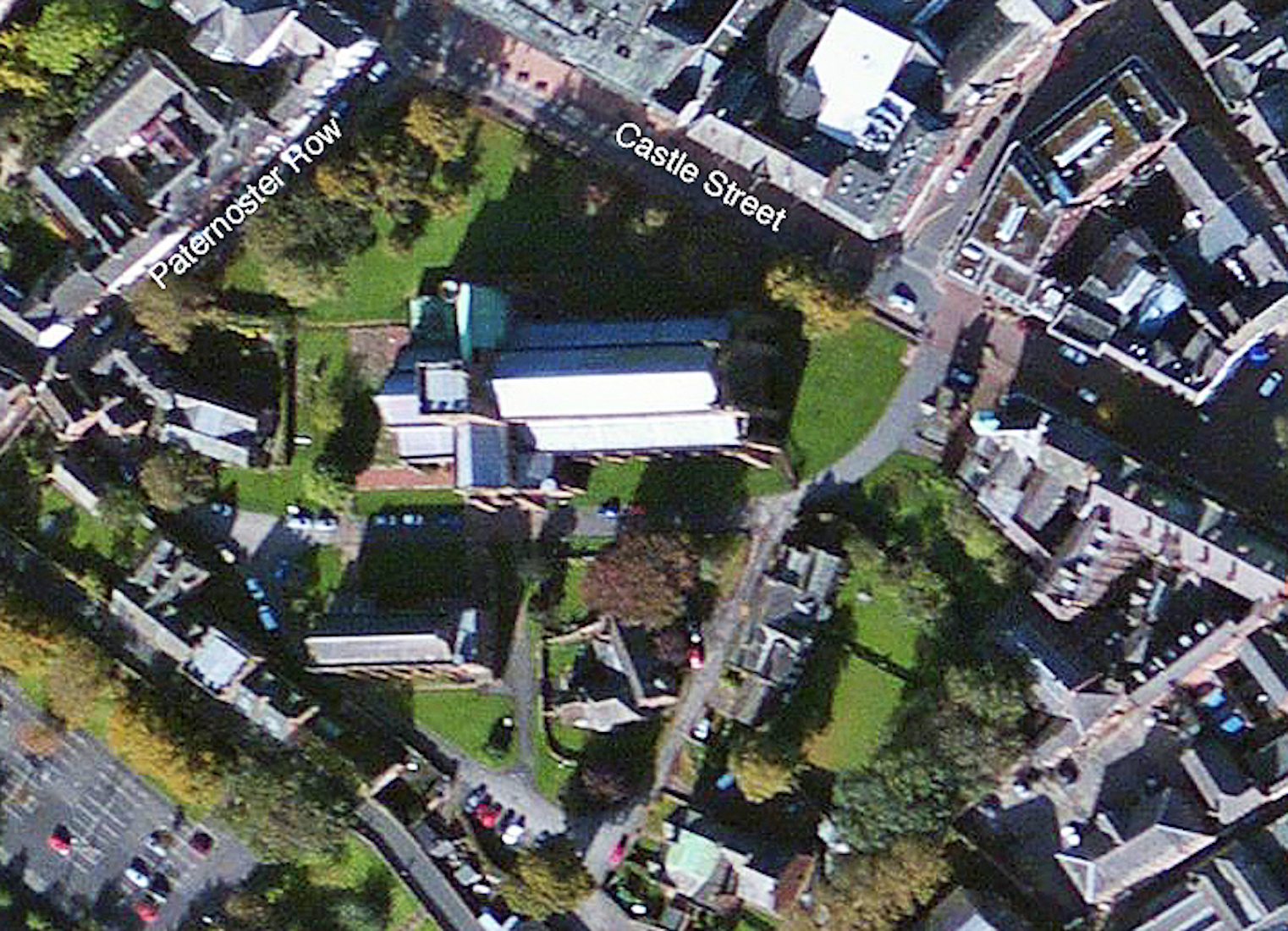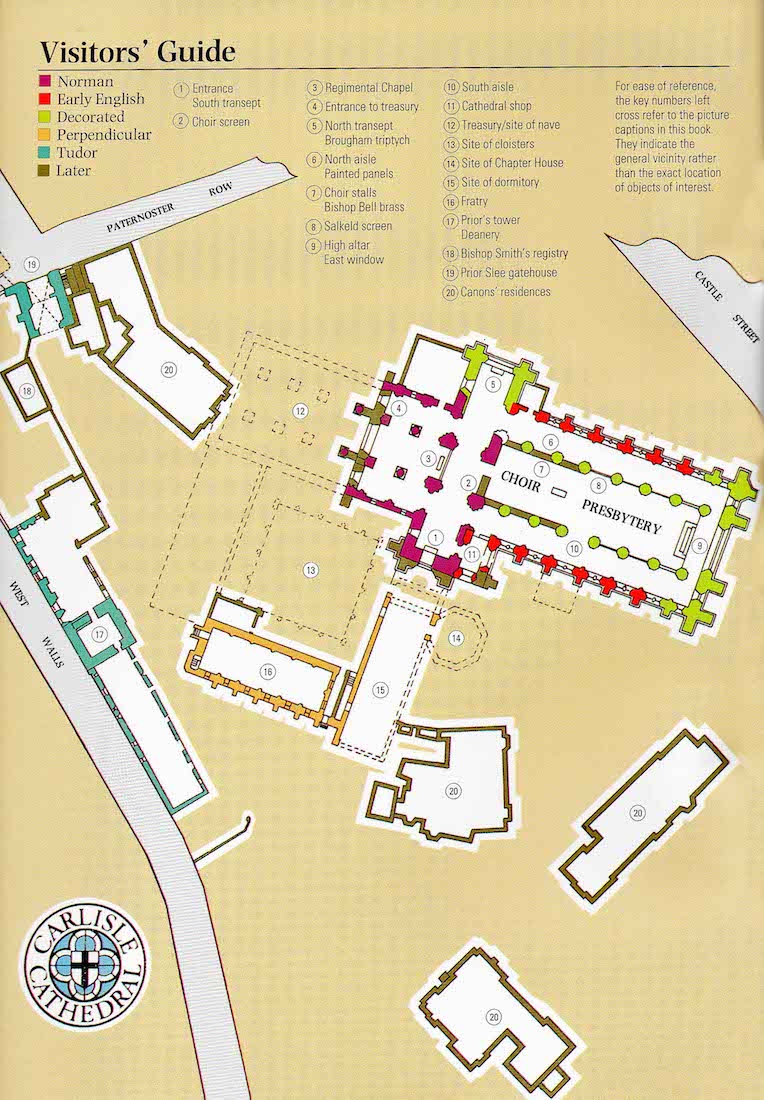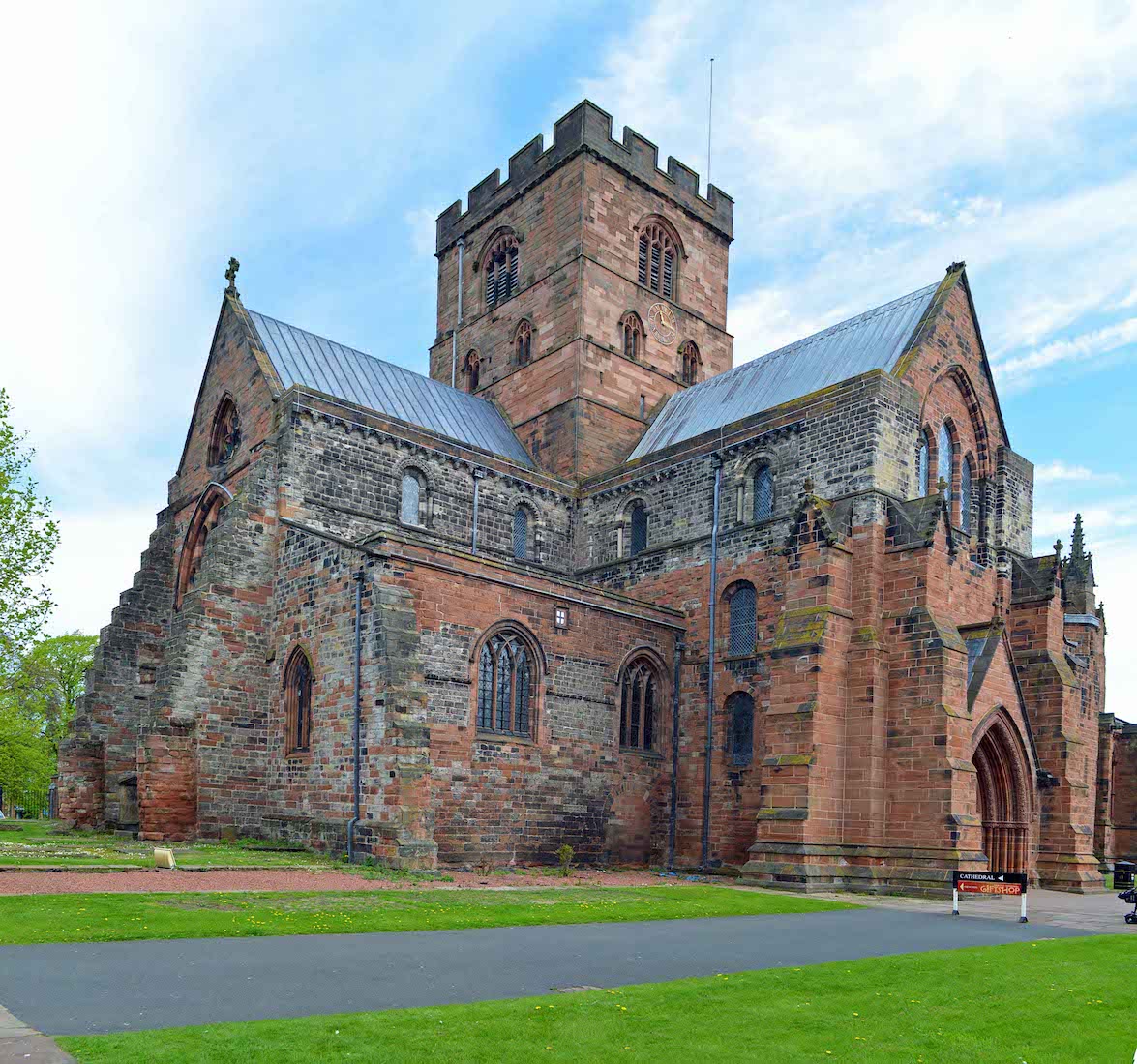CARLISLE CATHEDRAL
CUMBRIA, ENGLAND
PAUL SCOTT

SATELLITE VIEW
The most common approach to Carlisle Cathedral would be up Castle Street from the right. The Cathedral has a very short nave (at left) and the sanctuary at right. This faces almost exactly due east, so our liturgical and geographical directions will coincide. The Cathedral is surounded by extensive grounds which contain the old Abbey Gate at extreme left, and the Fratry (the large building just south of the nave). (A fratry is a monastery refectory.) The Cathedral is small and simple in its layout.

This is the official plan distributed by the Cathedral. It is much like the satellite view, but with useful labelling. The dotted lines indicate where old Cathedral and monastic building used to be. We shall start our exploration at the East (right) end, and walk around the Cathedral in a clockwise direction. This will take us out through the Abbey Gate into Paternoster Row and then returning to the Cathedral grounds. We then enter the Cathedral via the South transept, explore the short nave followed by the Eastern end and then the Treasury which is located underground at the West end.
You can begin your tour of Carlisle Cathedral by tapping / clicking on START .
You can access intermediate points of the tour by tapping / clicking on the following links:
Old Nave 21
To continue, you can either read the Wikipedia History of the Cathedral below, or start your tour with START!
NOTE ON MAGNIFYING IMAGES
With this website format the images are large enough for most purposes. If there is a need for greater magnification of an image, go to the identical photo on
https://www.flickr.com/photos/paulscottinfo/albums
and use Command - + (Mac) or Windows - + (Windows).
HISTORY
[Wikipedia]
Carlisle Cathedral was begun in 1122, during the reign of King Henry I, as a community of Canons Regular following the reform of the Abbey of Arrouaise in France. They followed a strict form of the canonical life, influenced by the ascetic practices of the Cistercians. Many large churches of Augustinian foundation were built in England during this period as the Archbishop of Canterbury, William de Corbeil, was a member of this order, but Carlisle is one of only four Augustinian churches in England to become a cathedral, most monastic cathedrals being Benedictine.
The church was begun by Athelwold, an Englishman, who became the first prior. In 1133, the church was raised to the status of cathedral and Athelwold became the first Bishop of Carlisle (1133–55). In 1233, the Cathedral priory community were joined by two friaries in the city. A Dominican friary and a Franciscan friary were founded close to the cathedral. The building was refurbished in the 13th and 14th centuries, receiving impetus from the presence of the court of Edward I in 1307.
In the 15th and early 16th centuries, the monastic buildings were renewed. With the Dissolution of the Monasteries from 1536, and the establishment by Henry VIII of the Church of England as the country’s official church, the Dominican and Franciscan friaries were dissolved and Carlisle, along with the other monastic cathedrals, was run by a secular chapter like the cathedrals at Lincoln and York. This practice has continued to this day.
During the time of the English Civil War, a portion of the nave of the cathedral was demolished by the Scottish Presbyterian Army in order to use the stone to reinforce Carlisle Castle. Between 1853 and 1870 Carlisle Cathedral was restored by Ewan Christian. In the early 19th century, the Cathedral became the subject for a geometric analysis by Robert William Billings.



